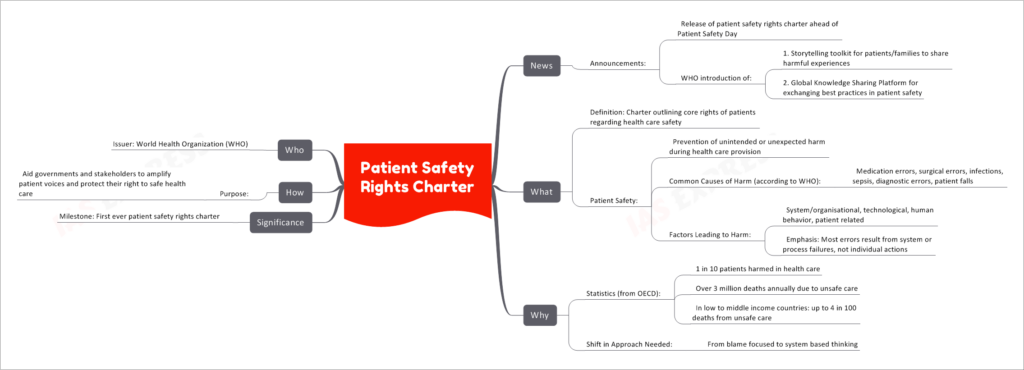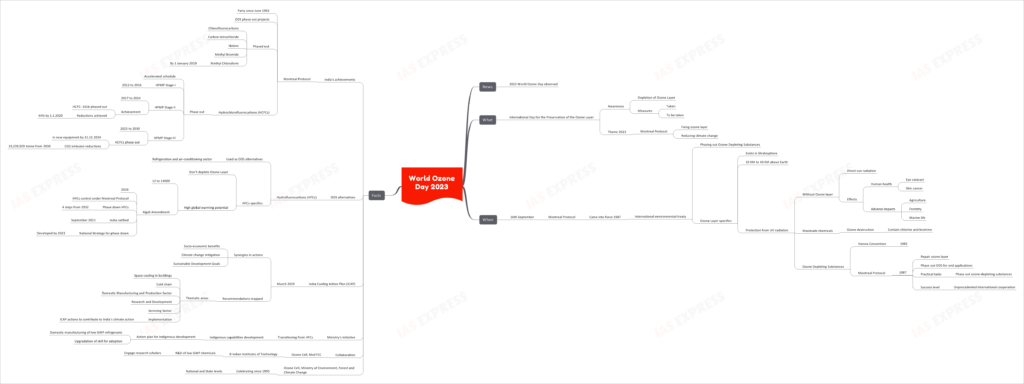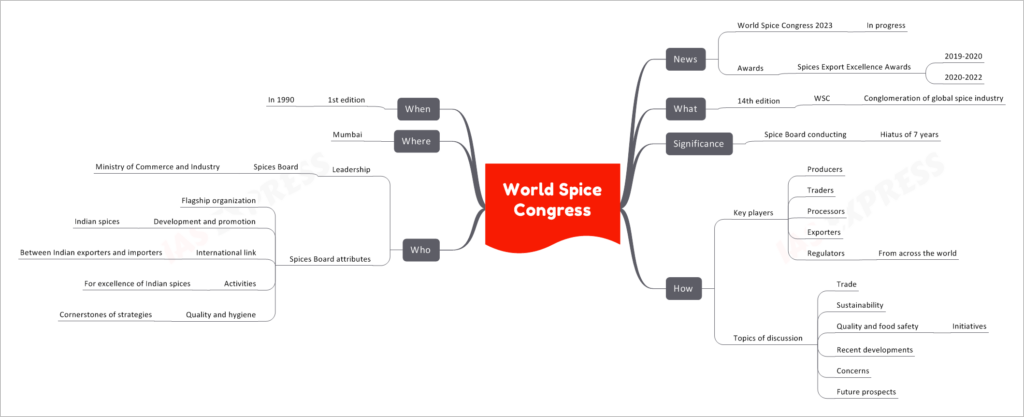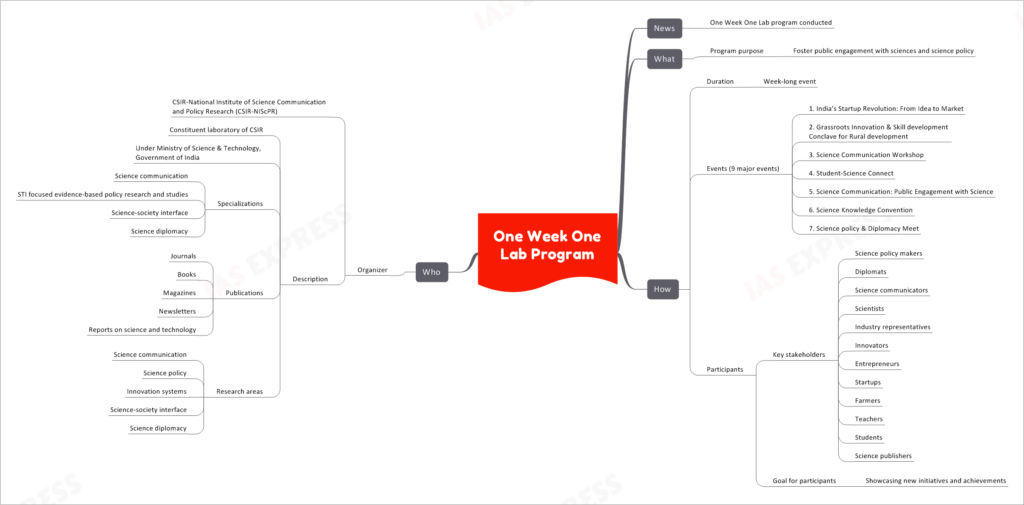[Newsbits] 16.09.2023

Patient Safety Rights Charter
Ahead of Patient Safety Day, the World Health Organization (WHO) has unveiled the Patient Safety Rights Charter. This charter outlines the fundamental rights of patients concerning healthcare safety, and it accompanies the launch of two crucial initiatives by WHO: a Storytelling Toolkit for patients and families to share harmful experiences and a Global Knowledge Sharing Platform for exchanging best practices in patient safety.
Defining the Patient Safety Rights Charter
- Charter Objective: The Patient Safety Rights Charter serves as a document that defines the core rights of patients related to healthcare safety.
Understanding Patient Safety
- Patient Safety: Patient safety in healthcare involves the prevention of unintended or unexpected harm to patients during the provision of healthcare services.
- Common Causes of Harm: According to WHO, common causes of harm in healthcare include medication errors, surgical errors, infections, sepsis, diagnostic errors, and patient falls.
- Factors Leading to Harm: Harm in healthcare can be attributed to various factors, including system or organizational issues, technological aspects, human behavior, and patient-related factors. It's important to note that most errors stem from system or process failures rather than individual actions.
The Need for the Patient Safety Rights Charter
- Alarming Statistics: OECD data reveals alarming statistics related to patient safety:
- Approximately 1 in 10 patients experience harm while receiving healthcare.
- Over 3 million deaths occur annually due to unsafe healthcare practices.
- In low-to-middle income countries, as many as 4 in 100 deaths can be attributed to unsafe healthcare.
- Shift in Approach: The Patient Safety Rights Charter highlights the necessity of shifting from a blame-focused approach to a system-based perspective when addressing patient safety concerns.
Significance of the Charter
- Milestone Achievement: The Patient Safety Rights Charter represents a significant milestone as it is the first-ever charter explicitly outlining the rights of patients concerning healthcare safety.
Objectives of the Charter
- Empowering Patients: The primary purpose of the Patient Safety Rights Charter is to empower patients and provide them with a clear understanding of their rights in the context of safe healthcare.
Issued by WHO
- Issuer: The Patient Safety Rights Charter is issued by the World Health Organization (WHO), a leading global authority in healthcare.
Critical Raw Materials Act
The European Parliament has granted approval for the Critical Raw Materials Act, marking a significant step towards ensuring a sustainable supply of critical raw materials within the European Union.
Defining the Critical Raw Materials Act
- EU Legislation for Sustainability: The Critical Raw Materials Act is a piece of EU legislation designed to address the sustainable supply of critical raw materials within the European Union.
Key Objectives and Highlights
Diversifying Imports and Boosting Domestic Extraction
- Diversification by 2030: The Act aims to diversify imports of critical raw materials by 2030, ensuring that no single third country supplies more than 65% of any strategic raw material.
- Boosting Domestic Capacity: Another objective is to enhance the Union's extraction capacity by 2030, with a goal of domestically extracting at least 10% of strategic raw materials.
Identifying Critical Raw Materials
- Critical Raw Materials: The Act identifies a list of critical raw materials, which include various metals and minerals such as Aluminum, Cobalt, Lithium, and more.
Increasing Processing and Recycling
- Increasing Processing: The Act targets increasing the processing capacity to meet 40% of annual consumption, covering all processing steps, with a specific aim of achieving 50% of annual consumption.
- Strategic Partnerships: To diversify the supply chain, the Act encourages the establishment of strategic partnerships with countries like Australia and Chile.
- Recycling Emphasis: Recycling plays a significant role in the Act's objectives, aiming to increase recycling capacity by more than 10% based on the 2020-2022 baseline. The Act also targets achieving 45% recycling of each strategic raw material from the Union's waste.
Addressing EU Dependence on China
- Main Objective: A primary goal of the Critical Raw Materials Act is to reduce the European Union's dependence on China for critical raw materials.
- Rationale: The EU has a high level of dependence on China, particularly concerning rare earth metals, with up to 99% of these materials sourced from China. This reliance raises concerns about supply disruptions, vulnerabilities, and security risks.
Key Proponent
- Proposed by: The Critical Raw Materials Act was proposed by European Commission President Ursula von der Leyen.
Supporting Facts
- IEA Critical Minerals Market Review: The International Energy Agency (IEA) Critical Minerals Market Review has highlighted several key findings, including:
- Growing Demand: There is a substantial demand for minerals driven by clean energy technologies, such as lithium, cobalt, and nickel.
- Demand Increases: Between 2017 and 2022, significant demand spikes have been observed, with cobalt witnessing a 70% increase, nickel experiencing a 40% increase, and lithium tripling in demand.
- China's Dominance: China plays a dominant role in the production of critical minerals. For instance, in 2021, China accounted for 80% of various stages of solar panel production, surpassing its own global photovoltaic demand.
World Ozone Day 2023
Commemorating the 2023 World Ozone Day
- News: The world observes the 2023 World Ozone Day with a renewed commitment to safeguarding our planet's vital ozone layer.
International Day for the Preservation of the Ozone Layer
- What Is It?: World Ozone Day, officially known as the International Day for the Preservation of the Ozone Layer, serves as a global platform to raise awareness about the depletion of the ozone layer and the measures taken and required to address this environmental concern.
- The 2023 Theme: This year's theme focuses on the "Montreal Protocol," highlighting its crucial role in fixing the ozone layer and reducing climate change impacts.
Significant Date: September 16th
- Montreal Protocol: On this day in 1987, the Montreal Protocol came into force as an international environmental treaty, with the primary objective of phasing out ozone-depleting substances (ODS).
- The Ozone Layer: Situated in the stratosphere, approximately 10 to 40 kilometers above Earth's surface, the ozone layer plays a critical role in shielding us from harmful ultraviolet (UV) radiation. Without this protective layer, direct sun radiation would have adverse effects on human health, including eye cataracts and skin cancer, and would also impact agriculture, forestry, and marine life.
- Ozone-Depleting Substances (ODS): These harmful man-made chemicals, containing chlorine and bromine, were identified as the primary culprits behind ozone destruction.
Montreal Protocol: A Historic Agreement
- Vienna Convention (1985): The Montreal Protocol's precursor, the Vienna Convention, laid the foundation for international cooperation on protecting the ozone layer.
- Unprecedented Success: The Montreal Protocol's success is attributed to unparalleled international cooperation in phasing out ozone-depleting substances.
India's Remarkable Achievements
- Montreal Protocol Party: India has been a party to the Montreal Protocol since June 1992.
- Phasing Out ODS: India has successfully phased out several ozone-depleting substances, including chlorofluorocarbons (CFCs), carbon tetrachloride, halons, methyl bromide, and methyl chloroform by January 1, 2010.
- Hydrochlorofluorocarbons (HCFCs): India has accelerated the phase-out of HCFCs under an ambitious schedule, achieving substantial reductions.
- HCFC Phase-Out Management Plan (HPMP): India's HPMP Stage-II (2017-2024) has already witnessed the phased-out of HCFC-141b, contributing to significant CO2 emission reductions.
- Future Goals: India is committed to further phasing out HCFCs in new equipment by December 31, 2024, with substantial CO2 emission reductions targeted by 2030.
ODS Alternatives: Hydrofluorocarbons (HFCs)
- HFCs as Alternatives: Hydrofluorocarbons (HFCs) have been widely adopted as alternatives to ozone-depleting substances, especially in the refrigeration and air-conditioning sector.
- Kigali Amendment (2016): The Kigali Amendment to the Montreal Protocol, ratified by India in September 2021, brings HFCs under control and outlines a phasedown plan starting in 2032.
- National Strategy: India is in the process of developing a comprehensive National Strategy to facilitate the phasedown of HFCs.
India Cooling Action Plan (ICAP)
- Initiated in March 2019: ICAP emphasizes the synergy between socio-economic benefits, climate change mitigation, and the achievement of Sustainable Development Goals.
- Mapped Recommendations: ICAP's thematic areas encompass space cooling in buildings, the cold chain, domestic manufacturing, research and development, servicing, and implementation to support India's climate action.
- Ministry's Initiative: India is actively promoting indigenous capabilities for the development of low Global Warming Potential (GWP) refrigerants.
- Collaboration: The Ozone Cell, Ministry of Environment, Forest and Climate Change, collaborates with eight Indian Institutes of Technology (IITs) to engage research scholars in the development of low GWP chemicals.
Celebrating Ozone Day in India
- Ozone Cell's Efforts: The Ozone Cell, Ministry of Environment, Forest and Climate Change, has been celebrating World Ozone Day in India since 1995, with activities conducted at both national and state levels.
World Spice Congress
In Progress: The World Spice Congress 2023 is currently underway, serving as a focal point for the global spice industry.
- Spices Export Excellence Awards: Acknowledging outstanding performance in the spice export sector, these awards cover the periods of 2019-2020 and 2020-2022.
The 14th Edition of WSC
- Edition: The World Spice Congress (WSC) 2023 marks its 14th edition, symbolizing its enduring significance and impact.
- Conglomeration of the Global Spice Industry: WSC acts as a confluence for the global spice industry, bringing together key stakeholders from various domains.
Spice Board's Role and Significance
- Spice Board: The Spice Board, under the Ministry of Commerce and Industry, is the driving force behind this event.
- A Hiatus of 7 Years: The Spice Board has revived the World Spice Congress after a hiatus of seven years, underscoring its importance.
Topics of Discussion
The congress encompasses a broad spectrum of discussions and deliberations, including:
- Trade: Addressing trade dynamics in the global spice industry.
- Sustainability: Exploring sustainable practices in spice cultivation and trade.
- Quality and Food Safety: Initiatives and strategies to ensure the highest quality and food safety standards.
- Recent Developments: Presenting and analyzing the latest trends and advancements in the spice sector.
- Concerns: Identifying and addressing key challenges and concerns within the industry.
- Future Prospects: Exploring the potential and future outlook of the global spice market.
Key Players
The event attracts a diverse array of participants, including:
- Producers: Spice producers from various regions across the world.
- Traders: Traders involved in spice commerce and distribution.
- Processors: Professionals engaged in spice processing and value addition.
- Exporters: Spice exporters who facilitate global distribution.
- Regulators: Representatives from regulatory bodies overseeing the spice industry worldwide.
Organizers: Spice Board's Leadership
- Spices Board: As the flagship organization, the Spices Board plays a pivotal role in the development and promotion of Indian spices on the global stage.
- International Link: The board serves as a crucial link between Indian exporters and international importers, fostering global trade relationships.
- Activities for Excellence: It spearheads activities aimed at enhancing the excellence of Indian spices in terms of quality, hygiene, and competitiveness.
Location: The Vibrant City of Mumbai
- Mumbai: The dynamic city of Mumbai serves as the backdrop for this significant event, offering a vibrant and strategic location.
Historical Context
- 1st Edition in 1990: The World Spice Congress made its debut in 1990, marking the beginning of a prestigious legacy in the spice industry's calendar.
The World Spice Congress 2023 continues to be a crucial platform for knowledge exchange, networking, and collaboration within the global spice community, shaping the future of this thriving industry.
Lee Kuan Yew
News Highlights
- Prime Minister Pays Tribute: On the occasion of Lee Kuan Yew's centenary, the Prime Minister pays tribute to the iconic leader.
- Himanta Biswa Sarma Honored: Assam Chief Minister, Himanta Biswa Sarma, receives the prestigious Lee Kuan Yew Exchange Fellowship of Singapore. Notable recipients include Arun Shourie (Former Union Minister), Shivraj Singh Chouhan (Madhya Pradesh Chief Minister), and Montek Singh Ahluwalia (Former vice-chairman of Planning Commission). The fellowship recognizes significant contributions to nation-building and the fostering of bilateral relations with Singapore.
- Fellowship Background: This fellowship is a tribute to Lee Kuan Yew, Singapore's founding Prime Minister, and its patron is the current Prime Minister of Singapore.
Profile: Lee Kuan Yew
- Who Was He?: Lee Kuan Yew was the former Prime Minister of Singapore, known for his remarkable leadership and contributions to the nation.
- Notable Achievements:
- Longest-serving Prime Minister: He served as Singapore's Prime Minister for an impressive tenure from 1959 to 1990.
- Singapore's Separation from Malaysia: Lee Kuan Yew played a pivotal role in orchestrating Singapore's separation from Malaysia in 1965, leading to the birth of the independent nation of Singapore.
- International Recognitions: He received numerous awards and honors during his lifetime, including the First Class Order of the Rising Sun from Japan in 1967, the Order of the Companions of Honour (C.H.) in 1970, and the Knight Grand Cross of the Order of St. Michael and St. George (G.C.M.G) in 1972. He was also recognized by countries such as Indonesia and Brunei for his contributions.
- Significance: Lee Kuan Yew is widely regarded as the founding father of modern Singapore. His visionary leadership and policies played a pivotal role in transforming Singapore from a small city-state into a global economic powerhouse and a model of efficient governance.
- Date of Birth: Lee Kuan Yew was born in 1923, and his centenary is being celebrated to honor his enduring legacy and contributions to Singapore and the world.
One Week One Lab Program
The One Week One Lab program has been successfully conducted, serving as a platform to foster public engagement with sciences and science policy.
Program Purpose
- Fostering Public Engagement: The primary objective of the One Week One Lab program is to encourage and enhance public engagement with the world of science and science policy.
A Week-Long Event with Diverse Activities
- Duration: This engaging program spans a week and features a diverse range of activities aimed at promoting science and science policy.
- Nine Major Events: The program comprises nine major events, each focusing on different aspects of science, innovation, and policy:
- India’s Startup Revolution: From Idea to Market
- Grassroots Innovation & Skill Development Conclave for Rural Development
- Science Communication Workshop
- Student-Science Connect
- Science Communication: Public Engagement with Science
- Science Knowledge Convention
- Science Policy & Diplomacy Meet
- (Event not specified)
- (Event not specified)
Participants: Key Stakeholders in Science and Policy
- Diverse Audience: The program attracts a wide range of participants, including key stakeholders in the fields of science and science policy. This includes:
- Science Policy Makers
- Diplomats
- Science Communicators
- Scientists
- Industry Representatives
- Innovators
- Entrepreneurs
- Startups
- Farmers
- Teachers
- Students
- Science Publishers
- Goal for Participants: The program provides a platform for these stakeholders to showcase new initiatives and achievements in the realm of science and science policy.
Organized by CSIR-National Institute of Science Communication and Policy Research (CSIR-NIScPR)
- Organizer: The One Week One Lab program is organized by the CSIR-National Institute of Science Communication and Policy Research (CSIR-NIScPR).
- Description of CSIR-NIScPR:
- Constituent Laboratory of CSIR: It operates as a constituent laboratory of the Council of Scientific and Industrial Research (CSIR), under the Ministry of Science & Technology, Government of India.
- Specializations: CSIR-NIScPR specializes in various domains, including science communication, science, technology, and innovation (STI) focused evidence-based policy research and studies, science-society interface, and science diplomacy.
- Publications: The institute contributes significantly to the dissemination of scientific knowledge through various publications, including journals, books, magazines, newsletters, and reports on science and technology.
- Research Areas: CSIR-NIScPR actively engages in research areas such as science communication, science policy, innovation systems, science-society interface, and science diplomacy.
If you like this post, please share your feedback in the comments section below so that we will upload more posts like this.






